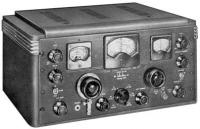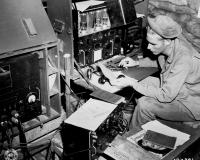20: An Intro to Pirate Radio
Introduction to Pirate Radio Systems by Necross Sinister & Thomas Icom


Getting a start in pirate broadcasting is pretty simple. To be honest with you, you probably have the basic stuff in your house already.
FM Radio
FM is one of the easiest bands to pirate in. You can also transmit here legally under the right conditions in accordance with Part 15 of the FCC Rules. Under Part 15 you are allowed 100 milliwats of output power with a maximum antenna length of 3 feet. Under the best circumstances that gives you a maximum range of about a mile. If you're in the city, a mile might do it, but under any other circumstances, you'll need some power.
For starting equipment you'll need a transmitter, an audio mixer, a stereo system with cassette deck, record player, CD, whatever, a microphone, an antenna, and possibly an RF amplifier. The transmitter can be either home built, or something a long the lines of Mr. Microphone. I prefer the homebuilt route as it allows for more flexibility, and low power FM transmitter plans and kits abound. The audio mixer is to combine your microphone input with your music. It's optional, but it does allow for a more professional set-up. The stereo system is whatever you can get together.
Anything that plays music will do. Same goes for the microphone, pick up one for 5 bucks at Radio Shack. The amplifier is a bit more difficult. You might be able to dig one up at a hamfest, or electronics/computer show, but chances are you'll have to make one if you want to put some power out. Get ahold of a Motarola MRF229 or MRF230 transistor, and use that to build a base amplifier for your transmitter. With 100 milliwats input it will put out about 1.25 watts. A little bit better, and then you can add another AMP to get it up even further, such as an MRF233 which will output 17 watts with a 1.25 watt input. There are also transistors that will boost the output power even further, although that runs a greater risk of causing interference; attracting the FCC to you. For most practical pirate radio uses, 17 watts is all you'll need. For an antenna, you can either buy a TV antenna and use that, or just build a dipole or quarter wave vertical. No big deal there. Now, assuming you already have a stereo system and music, we'll go over the cost of a basic pirate station.
TV Broadcasting
The basis for a TV broadcasting station is a VCR and an antenna. Hook up your VCR "out to TV" jack to your antenna, pop in a tape, and hit play. Poof! instant low-power TV transmitter with a mile or so range on whatever channel is unused in your area. Now for accessories you might want to get a video camera for broadcasting "live", or playing reporter, and then broadcasting whatever you recorded. And you also might want an RF amplifier to play with for extra power.
Get ahold of a 6 meter ham amplifier at a hamfest, and use that. You want one that can be driven with 100 milliwats. Or, you could have one built using the same Motarola transistors used for our FM amplifier. The only thing you have to do is modify the circuit values for 54-88 Mhz. instead of 88-108 Mhz. For those of you into do-it- yourself, The June and July 1989 issues of Radio Electronics magazine had an article on building a 2 watt TV transmitter that runs on UHF channel 14.
Pirate Operations
Broadcasting without a license is illegal. If you are busted, your equipment will be confiscated, and you might be fined. Also, if you are a hacker, or any type of non- conformist, or someone whom the big-shots think is "subversive", expect mo re severe treatment. So, to keep from getting caught, transmit sporadically, and from a mobile location if possible, also never give out any info over the air which they might be able to track you down with.
Don't cause any interference to a legit station, as this will get you busted real quick. One idea which was used to good effect was to tape record the entire broadcast, and then take the transmitter to a remote mountaintop. This way, you get farther with less power, and if they track the station down, you will only lose your radio if you're unlucky. If you stake the place out, you should be able to see them coming and then shut down and get out of there. But in any event, even if you do lose some equipment, they won't nail you, and you'll save yourself a fine or worse.



























